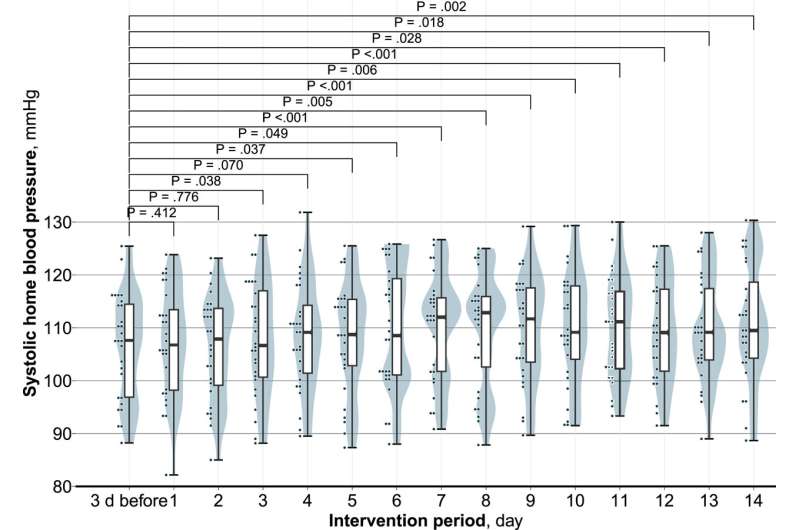This article has been reviewed according to Science X's editorial process and policies. Editors have highlighted the following attributes while ensuring the content's credibility:
fact-checked
trusted source
proofread
Small amounts of licorice raise blood pressure, study finds

It is known that large amounts of licorice cause high blood pressure. A study by researchers at Linköping University now shows that even small amounts of licorice raise blood pressure. The individuals who react most strongly also show signs of strain on the heart.
Licorice is produced from the root of plants of the Glycyrrhiza species and has long been used as a herbal remedy and flavoring. However, it is known that eating licorice can also raise blood pressure. This is mainly due to a substance called glycyrrhizic acid that affects the body's fluid balance through effects on an enzyme in the kidney. High blood pressure, in turn, increases the risk of cardiovascular disease.
Both the European Union and the World Health Organization have concluded that 100 mg of glycyrrhizic acid per day is probably safe to eat for most individuals. But some people eat more licorice than that. The Swedish Food Agency has estimated that 5% of Swedes have an intake higher than this level.
In a new study published in the American Journal of Clinical Nutrition, researchers at Linköping University wanted to test whether the limit determined as "likely safe" actually is so or not.
It is not easy to know how much glycyrrhizic acid is in the licorice you eat, as its concentration in different licorice products varies greatly. This variation may depend on factors such as origin, storage conditions and licorice root species. In addition, the amount of glycyrrhizic acid is not indicated on many products. The Linköping University study is the first to have carefully measured the amount of glycyrrhizic acid in the licorice that was tested, while being randomized and having a control group.
In the study, 28 women and men aged 18–30 were instructed to eat licorice, or a control product that did not contain any licorice, over two periods of time. The control product instead contained salmiak, which gives salty licorice its flavor. The licorice weighed 3.3 grams and contained 100 mg of glycyrrhizic acid, that is, the amount indicated as likely safe for most people to eat daily.
Participants were randomly assigned to eat either licorice or the control product for two weeks, take a break for two weeks, and then eat the other variety for two weeks. This enabled the researchers to compare the effect of both varieties in the same person. The study participants were asked to measure their blood pressure at home every day. At the end of each intake period, the researchers measured levels of various hormones, salt balance, and heart workload.
"In the study, we found that a daily intake of licorice containing 100 mg glycyrrhizic acid raised blood pressure in young healthy people. This hasn't previously been shown for such small amounts of licorice," says Peder af Geijerstam, doctoral student at the Department of Health, Medicine and Caring Sciences at Linköping University, general practitioner, and lead author of the study.
When the participants ate licorice, their blood pressure increased by an average of 3.1 mmHg. The researchers also measured two hormones that are affected by licorice and that regulate fluid balance: renin and aldosterone. The levels of both of these decreased when eating licorice. The quarter of the study participants who were most sensitive, based on their levels of the hormones renin and aldosterone decreasing the most after eating licorice, also gained slightly in weight, most likely due to an increased amount of fluid in the body.
This group also had elevated levels of a protein that the heart secretes more of when it needs to work harder to pump around the blood in the body, N-terminal pro-brain natriuretic peptide (NT-proBNP). This suggests increased fluid volume and heart workload in the individuals most sensitive to the effects of licorice.
"Our results give reason to be more cautious when it comes to recommendations and labeling for food containing licorice," says Fredrik Nyström, professor at the same department, who was responsible for the study.
More information: Peder af Geijerstam et al, A low dose of daily licorice intake affects renin, aldosterone, and home blood pressure in a randomized crossover trial, The American Journal of Clinical Nutrition (2024). DOI: 10.1016/j.ajcnut.2024.01.011


















